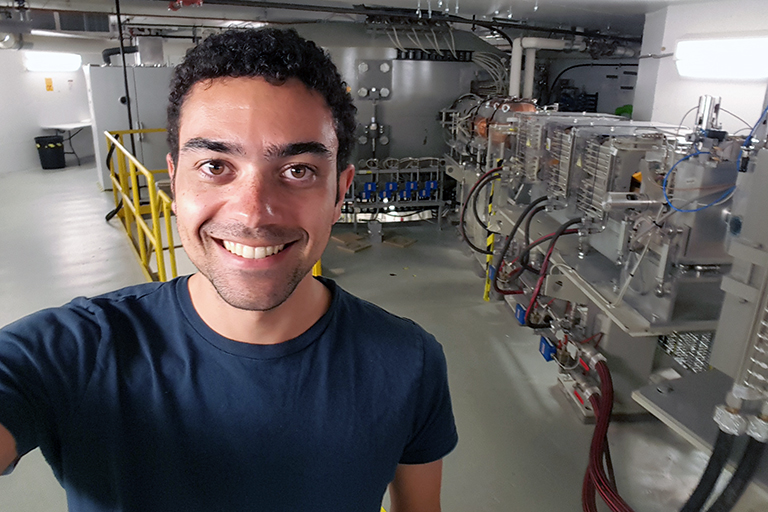
Micah Folsom in front of the accelerator at ProVision, a radiation therapy facility in Knoxville.
Micah Folsom, a recent doctoral graduate in nuclear engineering, has invented a radiation detector design that may one day be used to stop the smuggling of nuclear material or help emergency responders find radiation spread from a dirty bomb.
Folsom took a concept that was built for gamma ray detection and made it work for neutron scatter imaging technology.
This design successfully uses compact, optically separated plastic scintillator planes and an optical coded mask pattern inside of each plane in order to image/localize each neutron interaction within a module. It has also achieved reconstructions of the neutron spectrum, which helps to identify neutron source type.
Similar cameras that image neutron sources like plutonium are large and bulky because the neutron must interact at least twice, typically in two well separated planes, and the energies and locations of the neutron scatters must be known.
Folsom’s camera design is the first working compact neutron scatter camera, similar to a fast neutron equivalent of the Advanced Compton Telescope used in gamma ray astronomy.
“This design has very good potential to be able to image neutron sources rather quickly due to high potential for excellent imaging efficiency,” said Associate Department Head and Professor Jason Hayward, who served as Folsom’s thesis advisor.
The camera takes pictures of radiation, fast neutrons, and then shows where those fast neutrons are coming from. The purpose of the design is that it is compact enough for someone to carry on their person.
—Micah Folsom
The camera utilizes what’s called coded-aperture imaging, which consists of a very specific shadow pattern and a light source. The source will cast a shadow right through the pattern, similar to how light will go right through fingertips.
There’s a very specific pattern cast onto the photo systems; then the shot is recorded and an unfolding algorithm is used to figure out where the light came from.